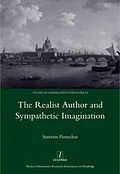"The nineteenth century realist author was a contradictory figure. He was the focus of literary criticism, but obscured his creative role by insisting on presenting his works as 'copies' of reality. He was a celebrity who found himself subservient to publishers and the public, in a newly-industrialised literary marketplace. He was the owner of his work who was divested of his property by imperfect copyright laws, playwrights who adapted his novels for the stage, and sequel-writers. This combination of a conspicuous yet precarious status with a self-effacing attitude was expressed by an image of the author as a plural, Protean subject, possessing the faculty of sympathetic imagination - which the realists incorporated in their works in the form of a series of fictional characters who functioned as 'doubles' of the author. Paraschas focuses on two realists, Honorede Balzac and George Eliot, and traces this authorial scenario from its origins in the late eighteenth century to its demise in the early twentieth century, examining its presence in the works of E.T.A. Hoffmann, Friedrich Schlegel, Charles Baudelaire and Andre Gide."
Autorentext
Sotirios Paraschas
Inhalt
Introduction: An Author for Realism Part I: Sympathetic Imagination 1. Sympathy and Sympathetic Imagination in Realist Fiction 2. Irony and Sympathetic Imagination 3. The Authorial Economy of Sympathy Part II: Authorial Doubles in Realist Fiction 4. Balzac and the Author as Capitalist 5. Baudelaire, the Flâneur, and the Author as Prostitute 6. Daniel Deronda: The Commodity and its Soul 7. The Decline of the Authorial Double 8. Concluding Reflections
